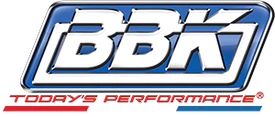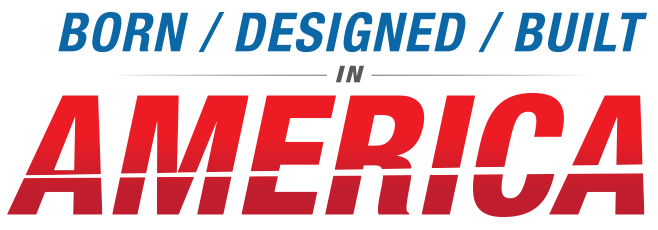
Tips For Doing A Wheelie in Your Ford Mustang
One of the coolest parts about drag racing is doing a wheelie. A hard launch presses you firmly in the seat, the nose gets light and there’s a sense of gratification that comes from hooking hard. The icing on the cake is when a photographer nails the shot, right at the peak of the wheelie. Getting the wheels up means your car is accelerating at it peak, which is the ultimate goal. Of course you don’t have to pop a wheelie to have good traction, but it certainly helps. Here are tips for doing a wheelie in your Mustang. Using them will ensure you capture those perfect launches every time.
Making your Mustang move quickly and consistently off the starting line boils down to having a basic understanding of how your suspension works, selecting the right parts, and driving well. Combine those three things and you’ll be rocketing off the line.
[caption id="attachment_4712" align="aligncenter" width="700"]
 Pow! It's wheelie time.[/caption]
Pow! It's wheelie time.[/caption]Naturally, the first thing you’ll need is a Mustang with a solid foundation. Frame connectors are a must in 1979 – 2004 Mustangs. They will prevent chassis flex and let your suspension work properly. Without them, your chassis can deflect under load and your suspension will not work consistently. A roll bar or roll cage is also a good idea. When designed and installed properly, it will add extra body stiffness and safety.
However, getting the nose up and keeping the tires planted is the job of the suspension. Here's how it works. Upon launch, the tires dig in and rotate forward to drive the car. But for every action, there is an opposite and equal reaction, so the rear-end housing sees force in the opposite direction to the wheels. This opposite force applied to the rear housing is actually good, as it creates a force on the rear suspension links (control arms). The upper bars are pulled rearward and the lower bars are forced forward and upward. Since they are connected to the body, those forces cause the nose of the car to lift. The technical term for the nose lifting is pitch rotation. Racers enhance lift with the addition of soft front springs designed for drag racing with thin, tightly wound coils, and with front struts that feature “soft” valving on extension (called jounce) and stiffer valving on compression (rebound).
[caption id="attachment_4710" align="aligncenter" width="700"]
 Carlos Sobrino's "Joker" getting after it in NMRA action.[/caption]
Carlos Sobrino's "Joker" getting after it in NMRA action.[/caption]Brothers Performance offers a variety of springs, struts, and shocks, designed for basic street/strip applications, as well as more complex parts that offer adjustability for the more serious enthusiast. As you can imagine, reducing weight also helps. Weight reduction can come in the form of aluminum heads, lightweight brakes, carbon fiber or fiberglass hood, tubular front suspension parts, etc.
[caption id="attachment_4713" align="aligncenter" width="700"]
 Coyote Stock is a popular new class in the NMRA.[/caption]
Coyote Stock is a popular new class in the NMRA.[/caption]But even with fancy race parts, keep in mind that springs support the “sprung” weight of the vehicle. And we can manipulate the sprung weight to enhance traction during launch, whether it’s on the street, strip, or on a road course. When better handling is the goal, we use short, stiff springs with matching dampers. This limits body roll and keeps the contact patches at all four corners in compliance with the road surface. In drag racing, we want front end lift (to a point) so the front springs are often tall and thin in order to store lots of energy when they are compressed. One popular set for the 1979 - 2004 Mustang are the Moroso Trick Drag Springs. This style of spring helps the nose lift during launch, as you can guess, handling suffers. Mustang drag racers often match their soft front springs with Lakewood 90/10 or 70/30 struts. These struts release quickly on launch, and are stiff on rebound. This lets the nose rise quickly and settle slowly.
Brothers Performance also offers the very popular Eibach Drag Launch kit, which Mustang racers have been using for decades. These springs feature rates desirable for drag racing — yet they still provide solid street handling. The kit also includes an air bag, which is installed in the passenger-side rear spring, and can be filled or deflated for tuning (or street driving) to limit body roll. When inflated to the recommended psi, the bag adds stiffness to the right rear spring to prevent body roll (termed roll rotation) on launch. Keeping the body flat lets both rear tires apply power evenly. A popular choice for rear shocks with this combination is the Lakewood 50/50. These shocks feature valving designed for straight-line acceleration and are optimized for 1979 – 2004 Mustangs.
There are also a number of single and double adjustable drag racing struts and shocks on the market. Adjustable shocks and struts put the tuning in your hands. This helps you dial in your car for maximum performance and for changing track conditions. I recommend you do you homework before purchasing a set, as each company offers slightly different valving. Some dampers feature a steel body, others are aluminum, allowing a nice weight savings. Consult the manufacturer if necessary to determine the best spring/damper package for your car.
[caption id="attachment_4712" align="aligncenter" width="700"]
 Pow! It's wheelie time.[/caption]
Pow! It's wheelie time.[/caption]Lastly, you’ll want sticky tires to compliment your new suspension, and I always recommend a driveshaft safety loop in any drag car. Once you’ve installed your new parts, get out to the track, dump the clutch and throw that front end in the air!






